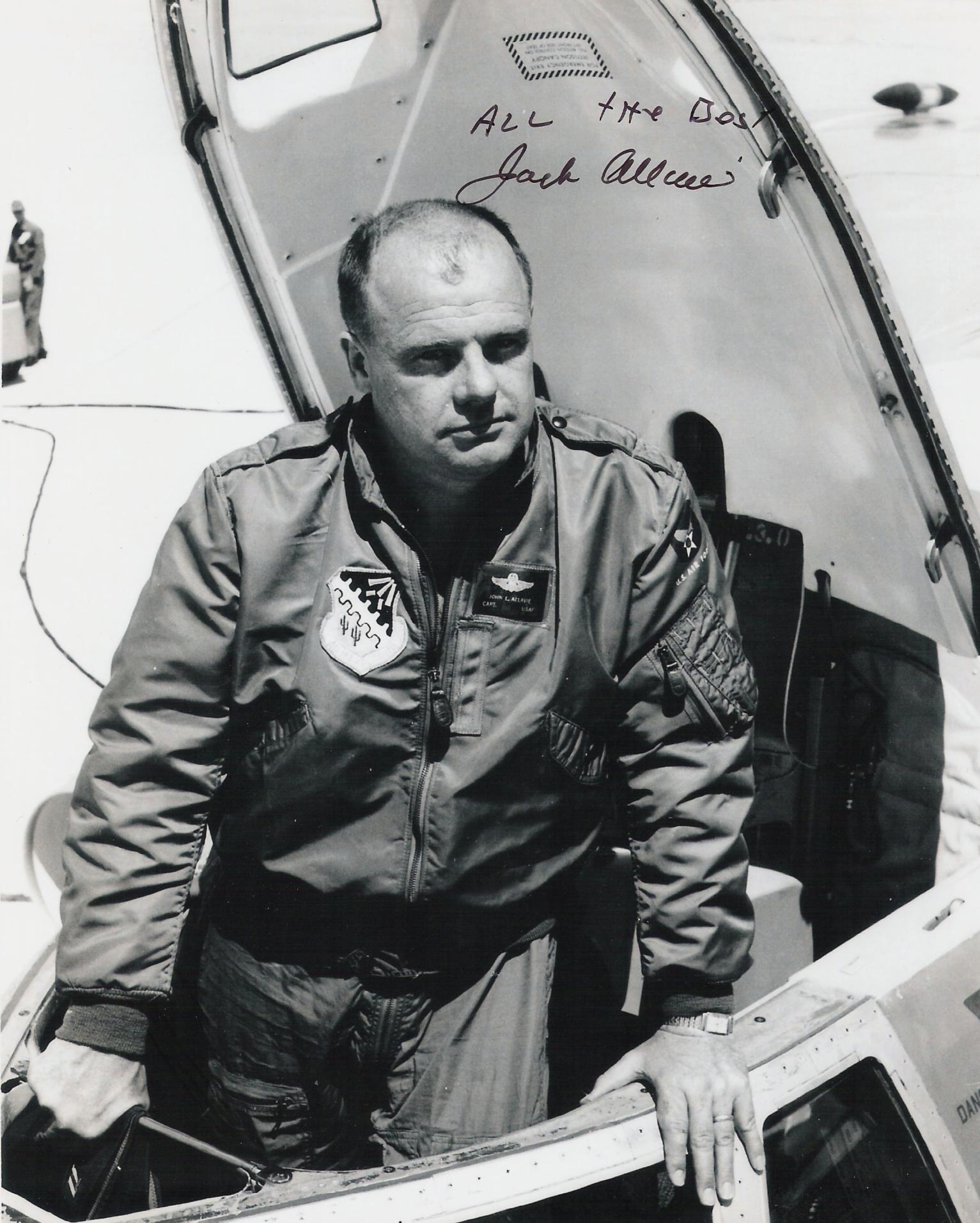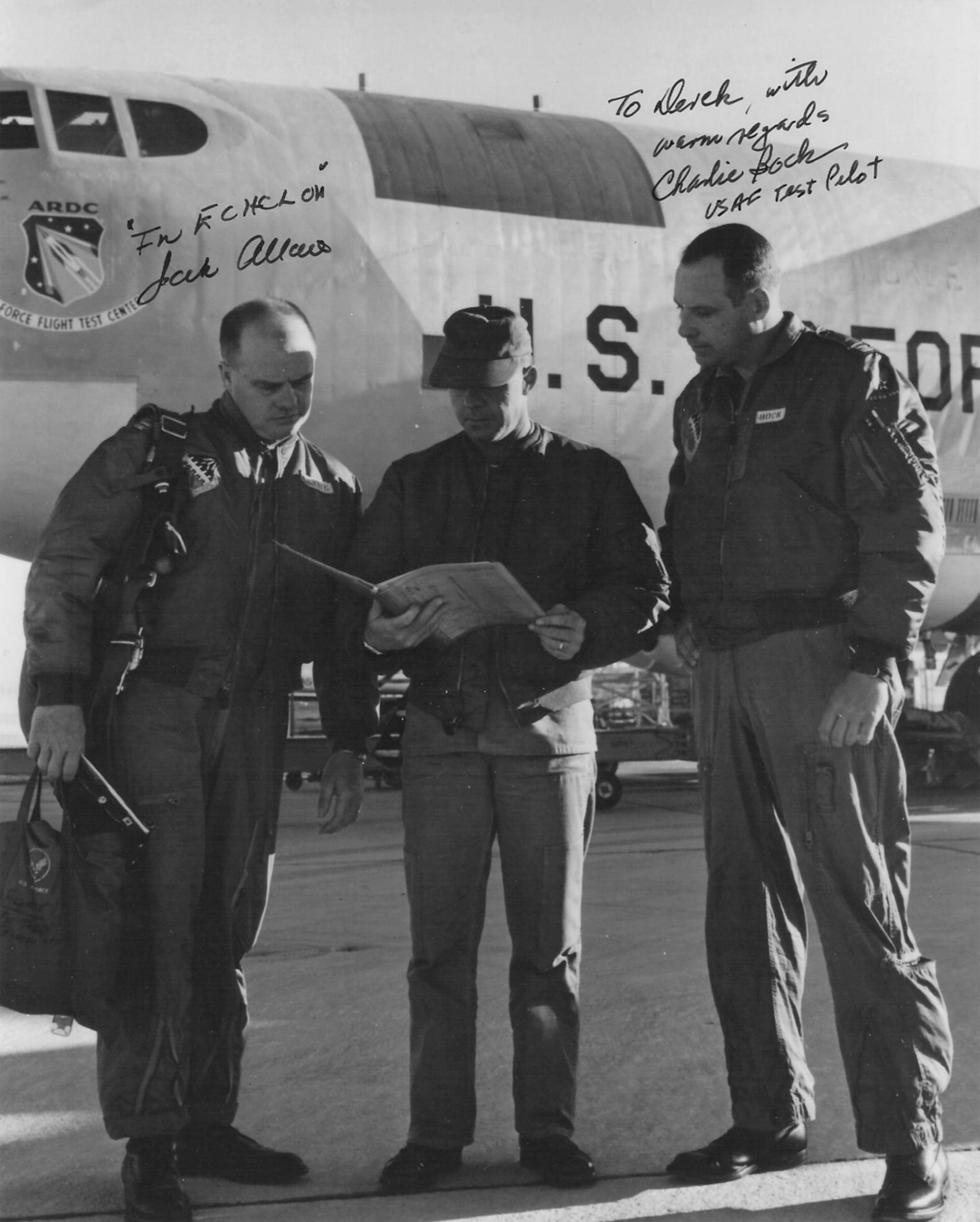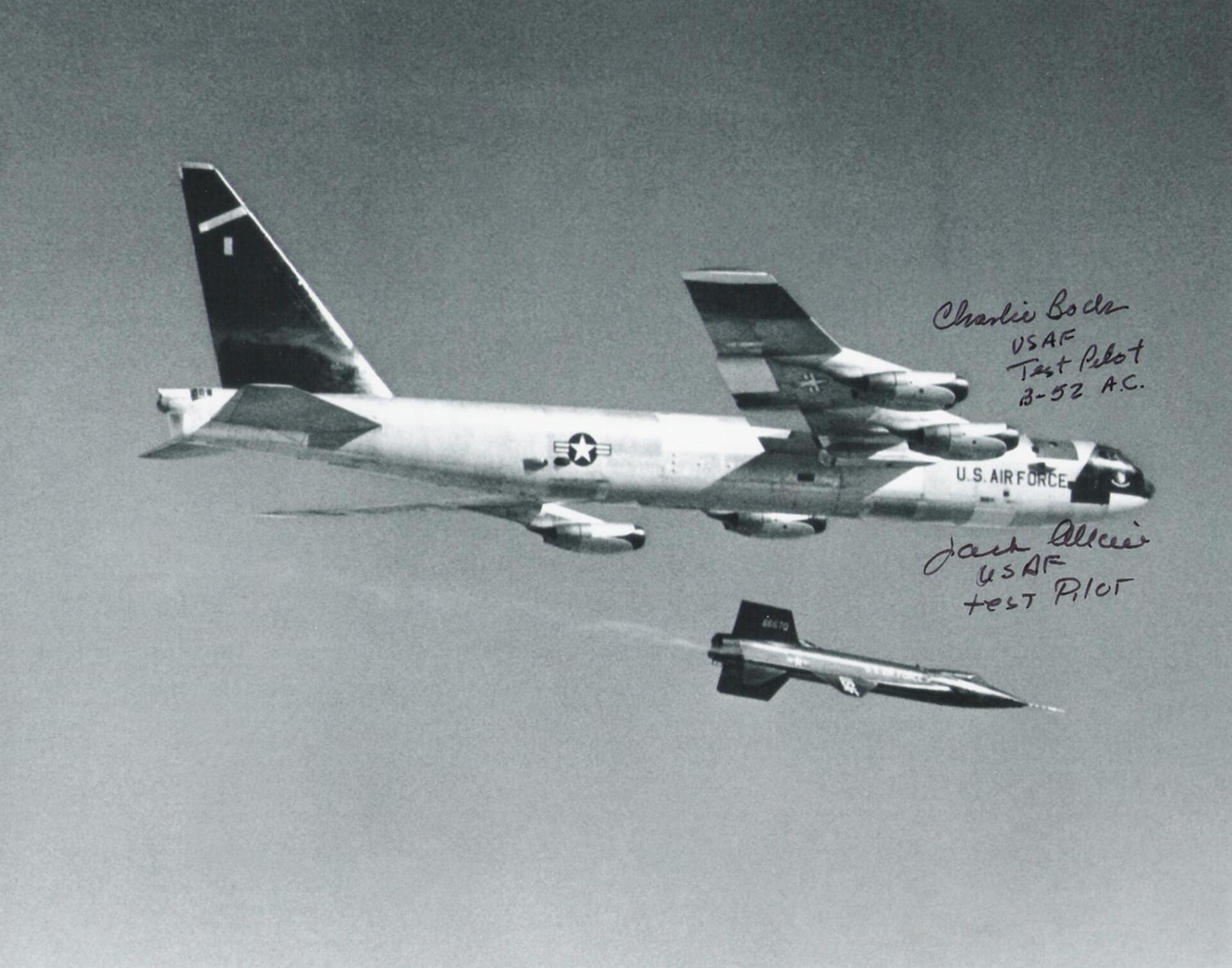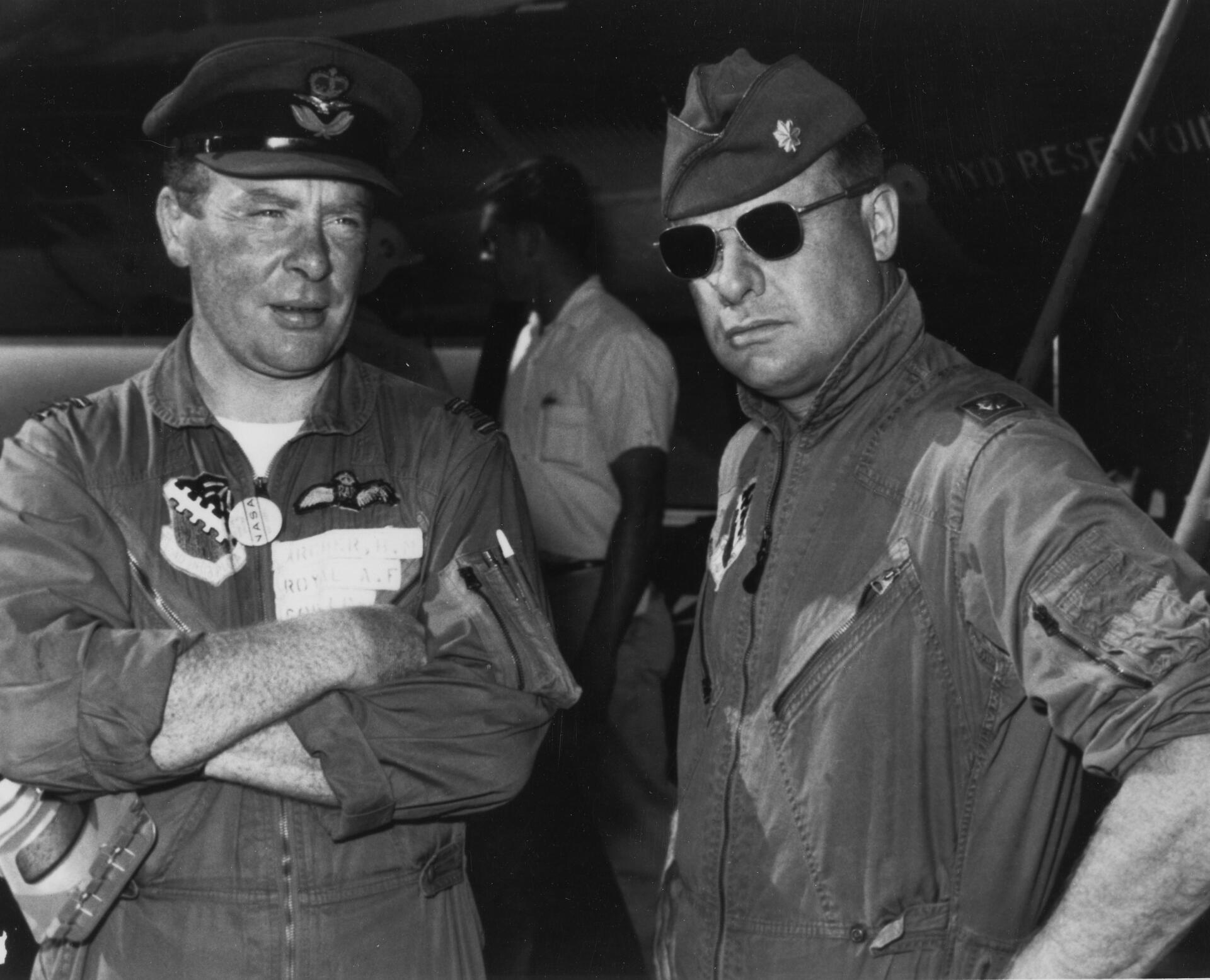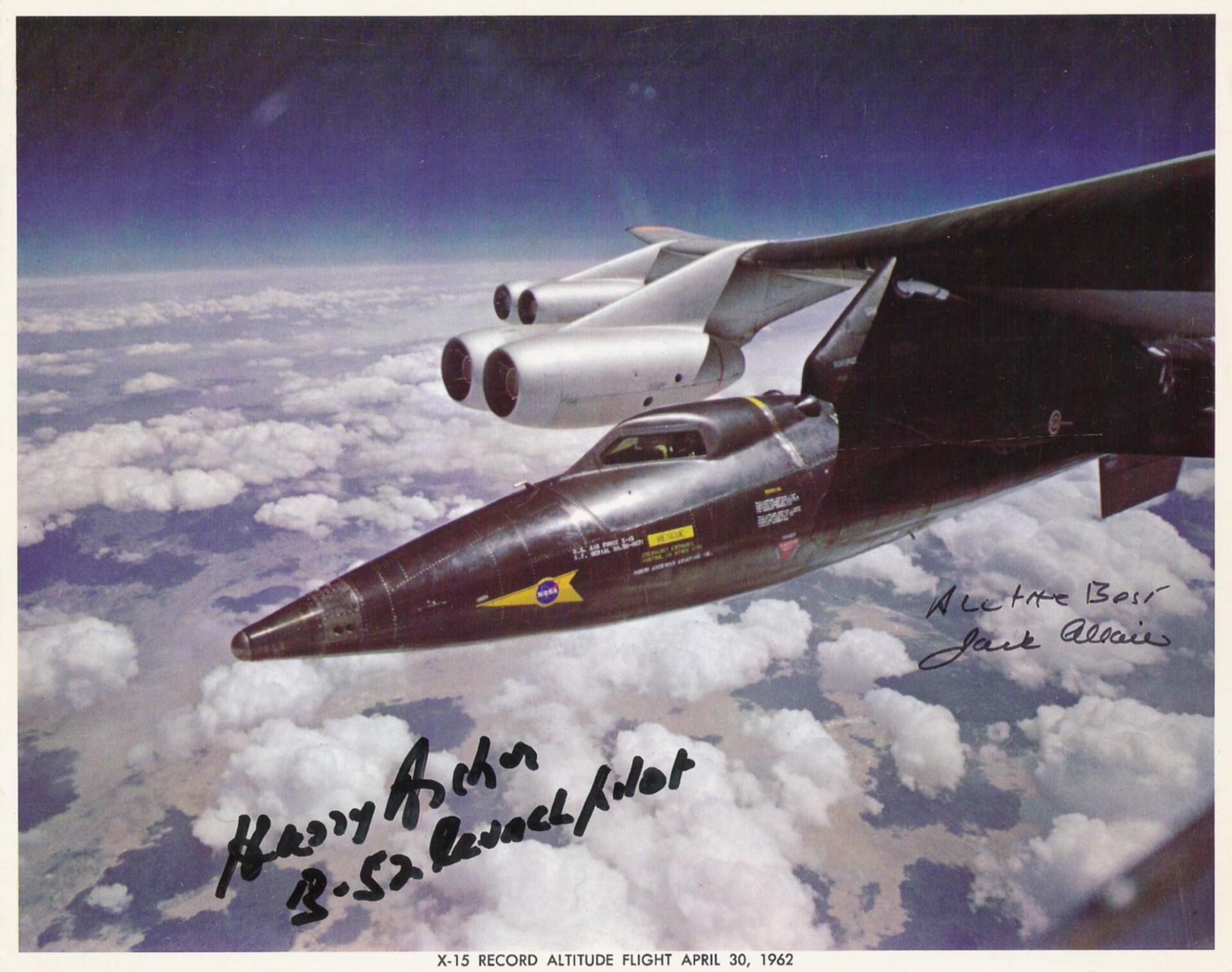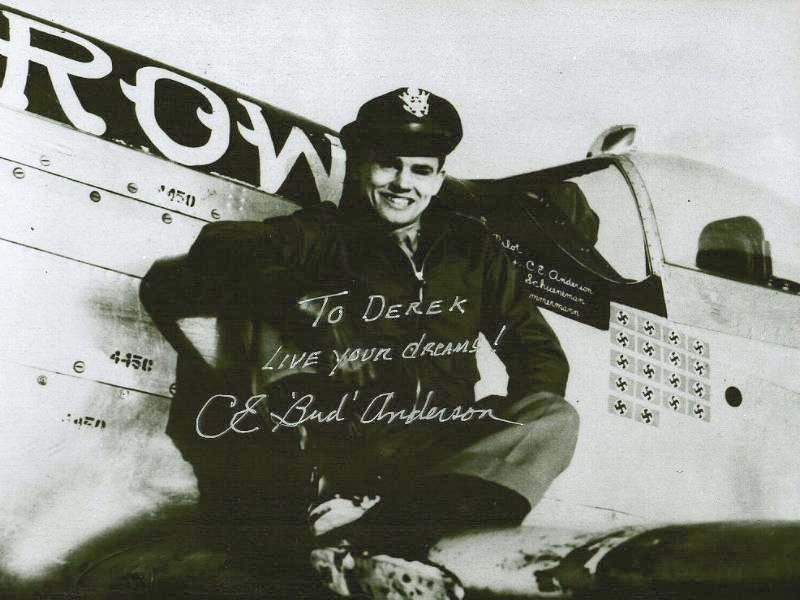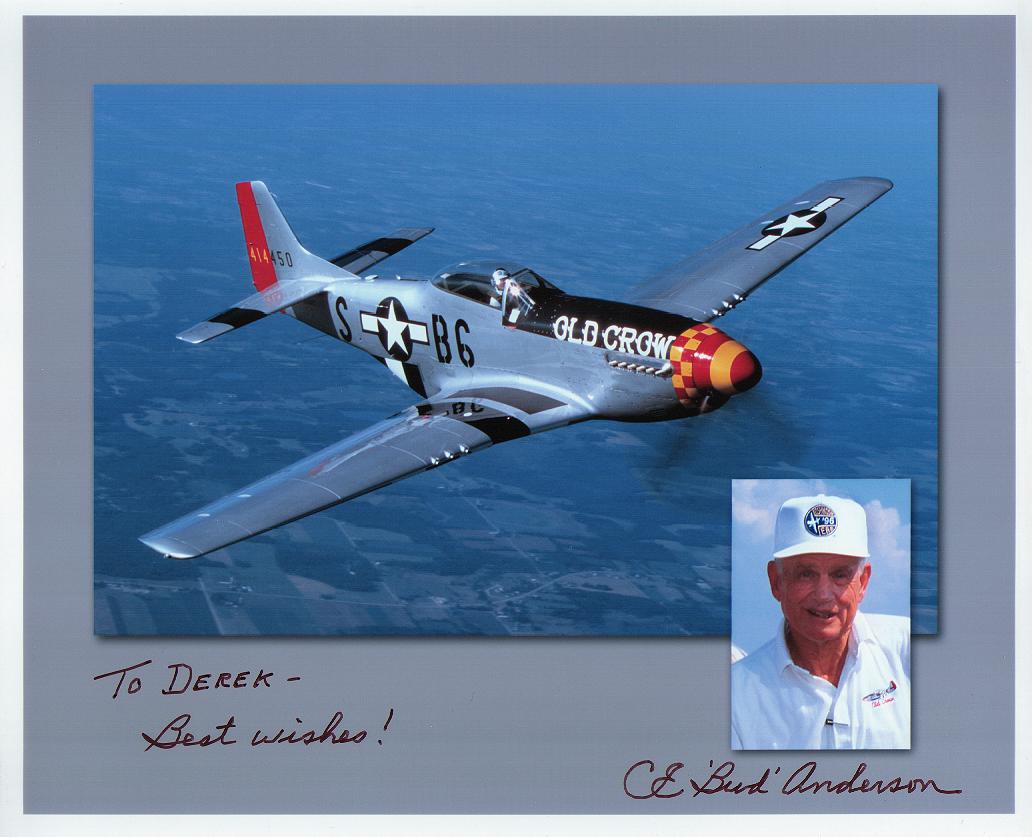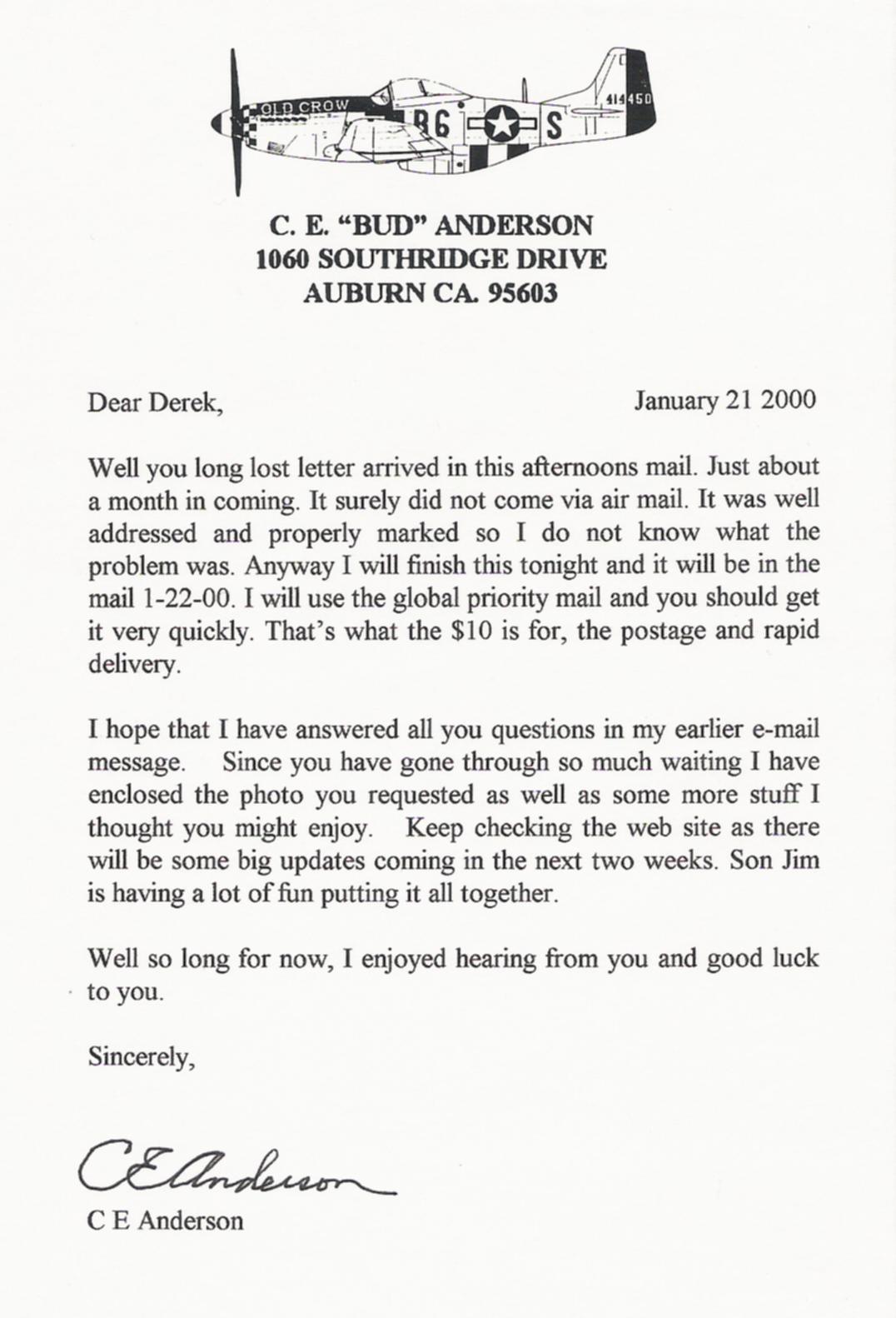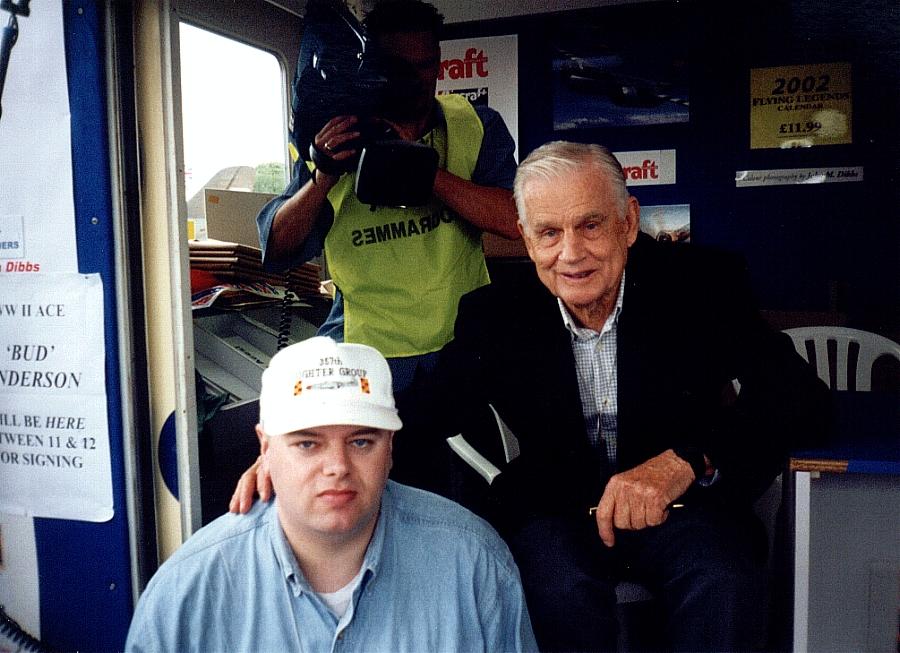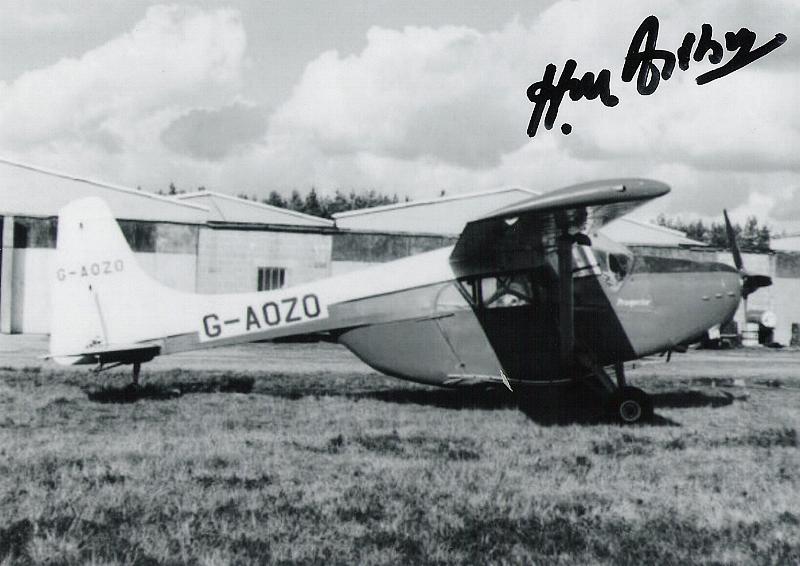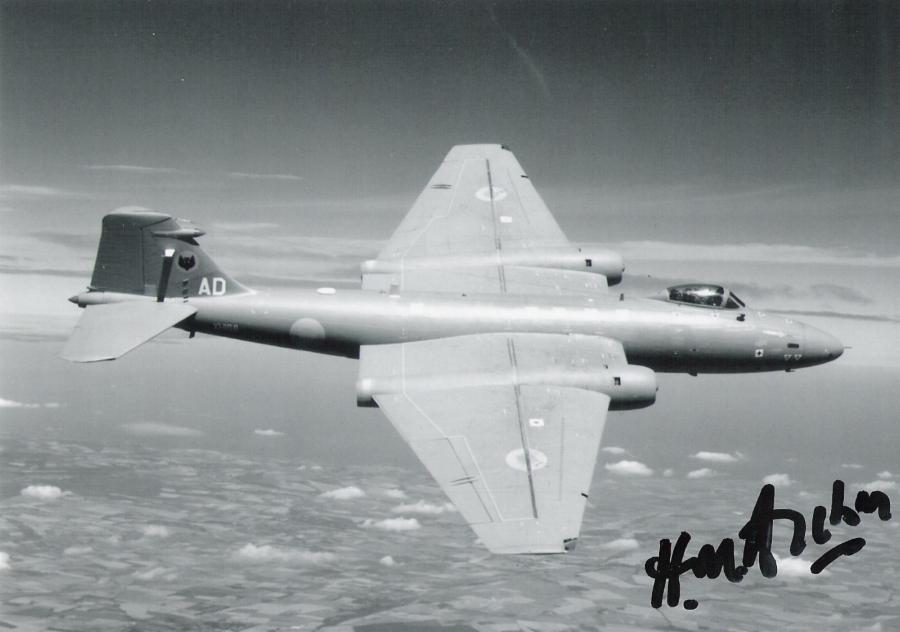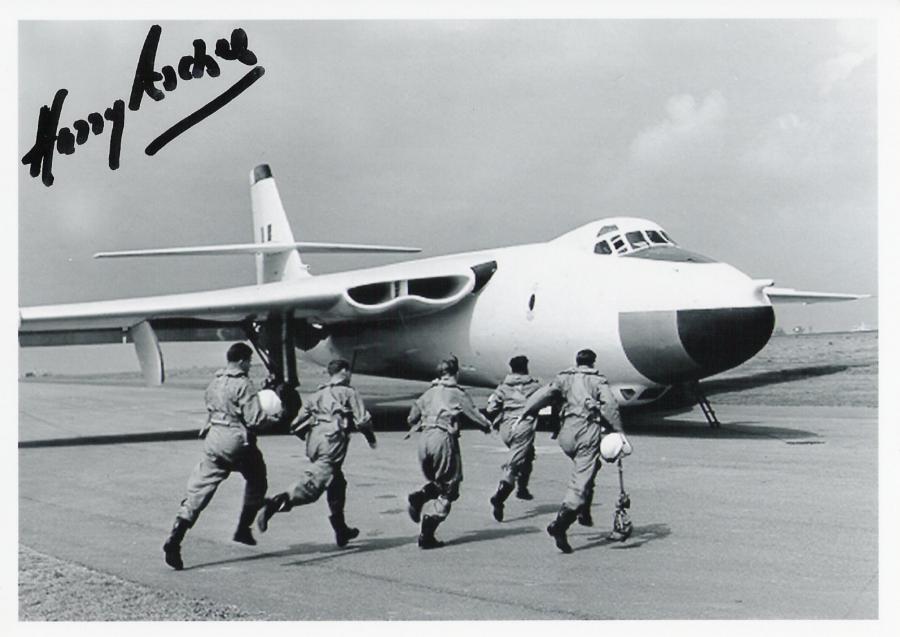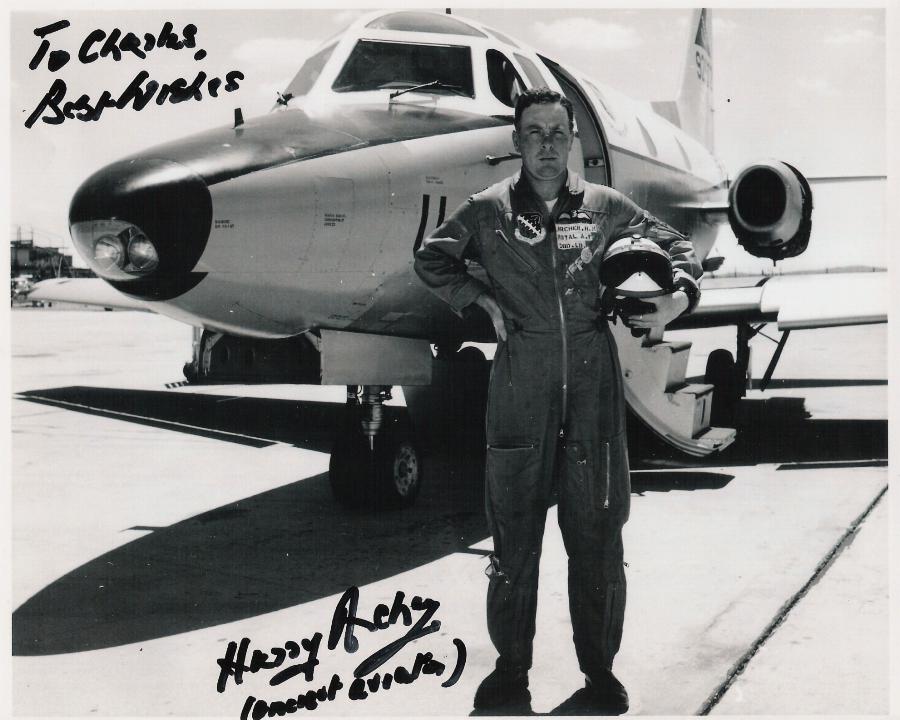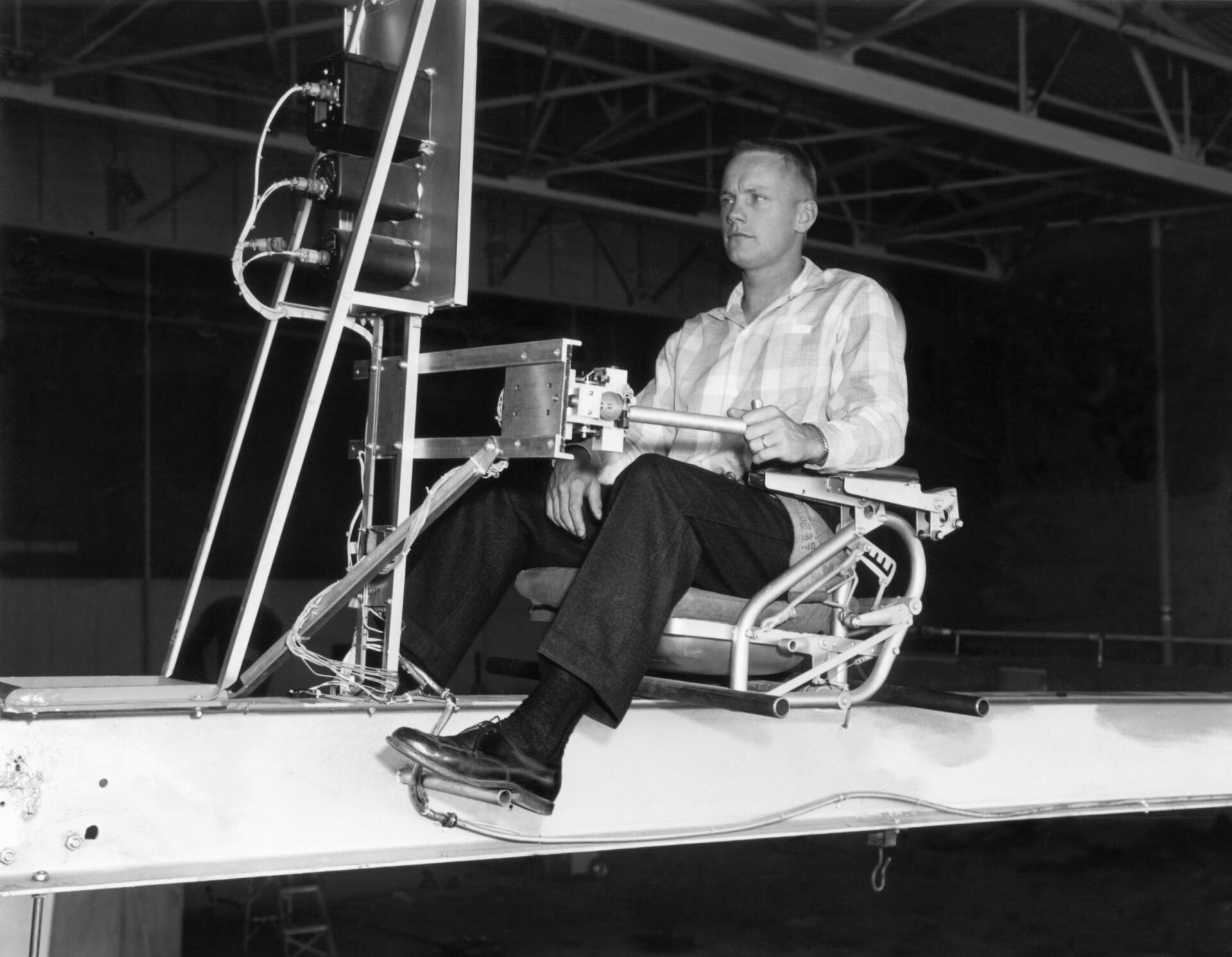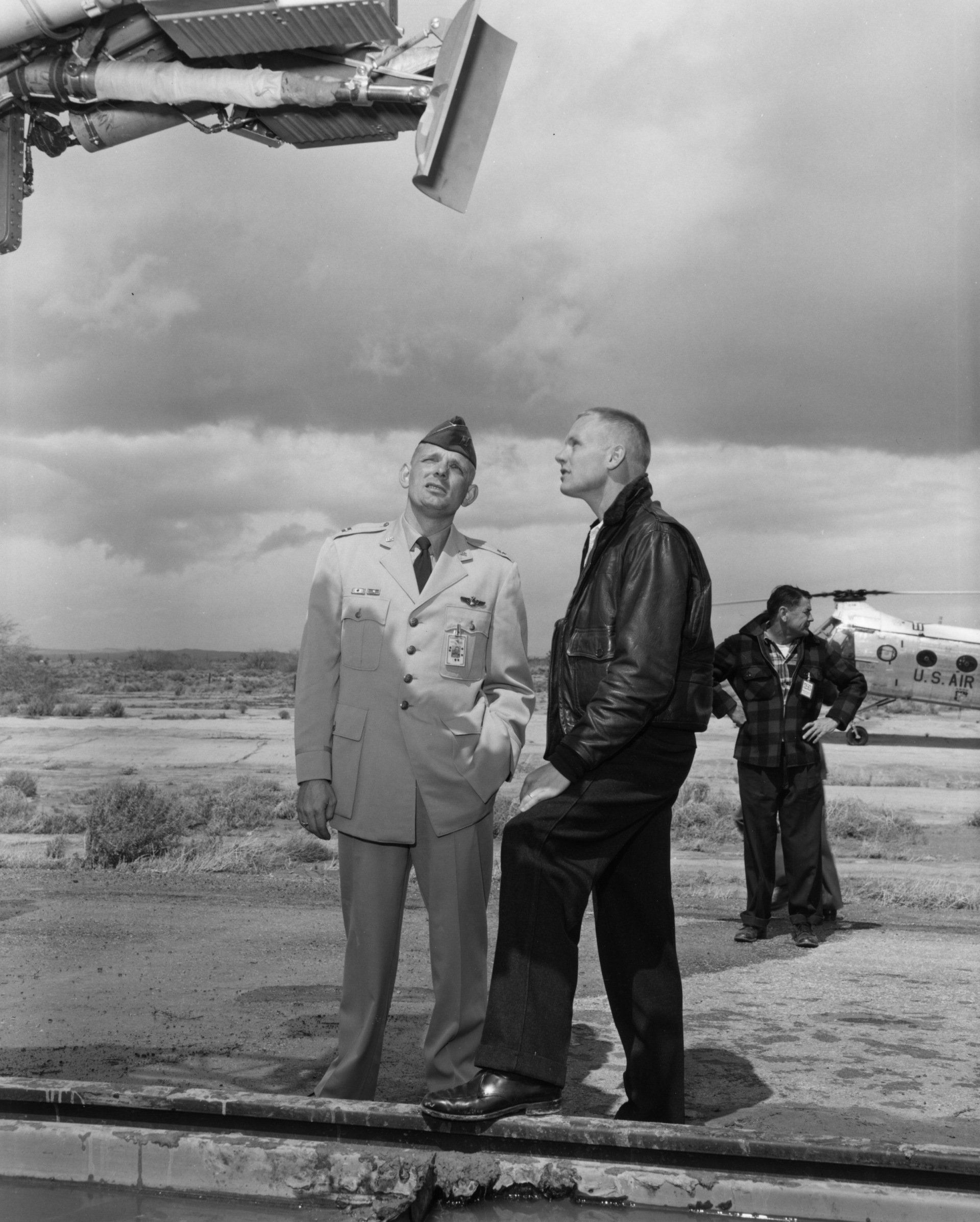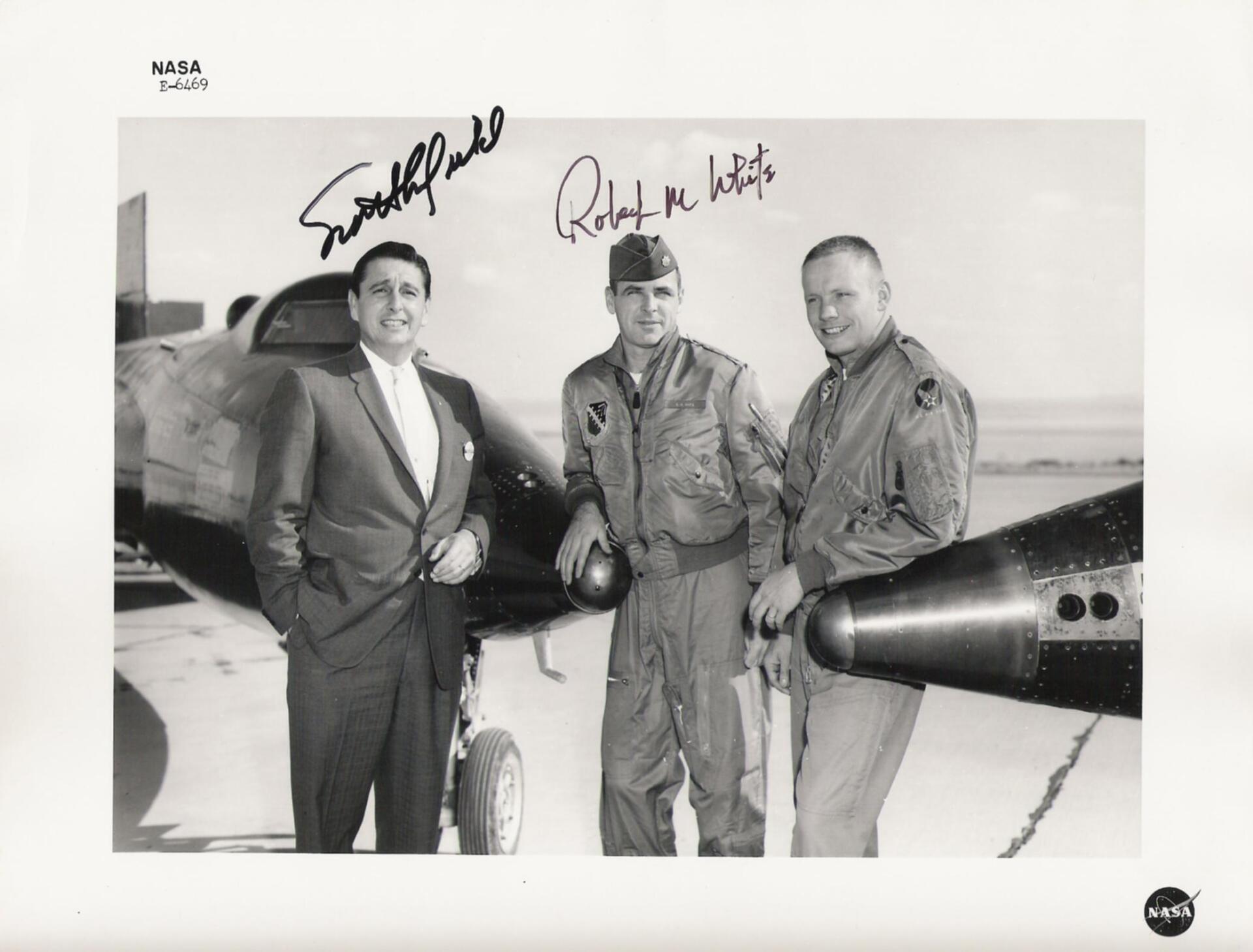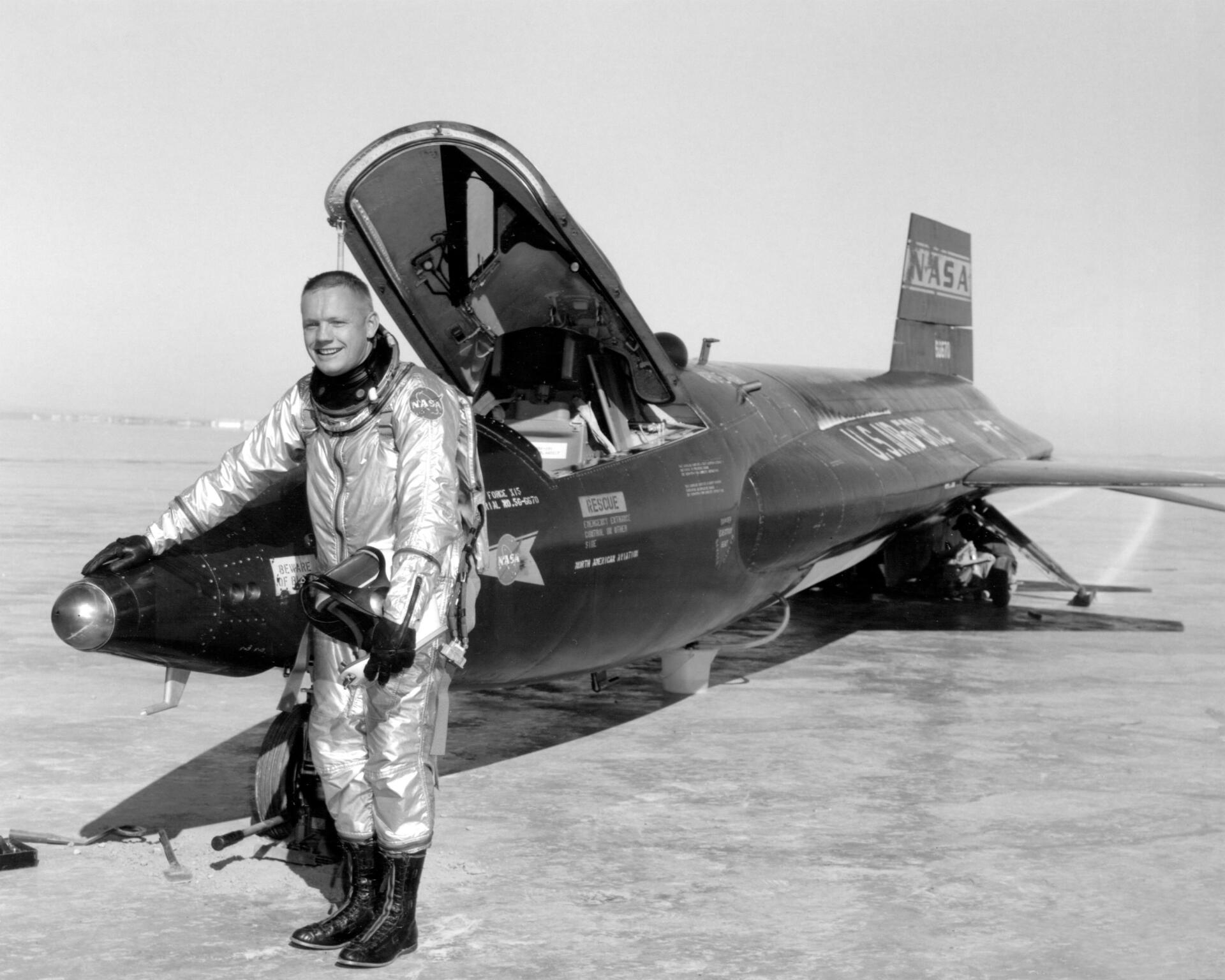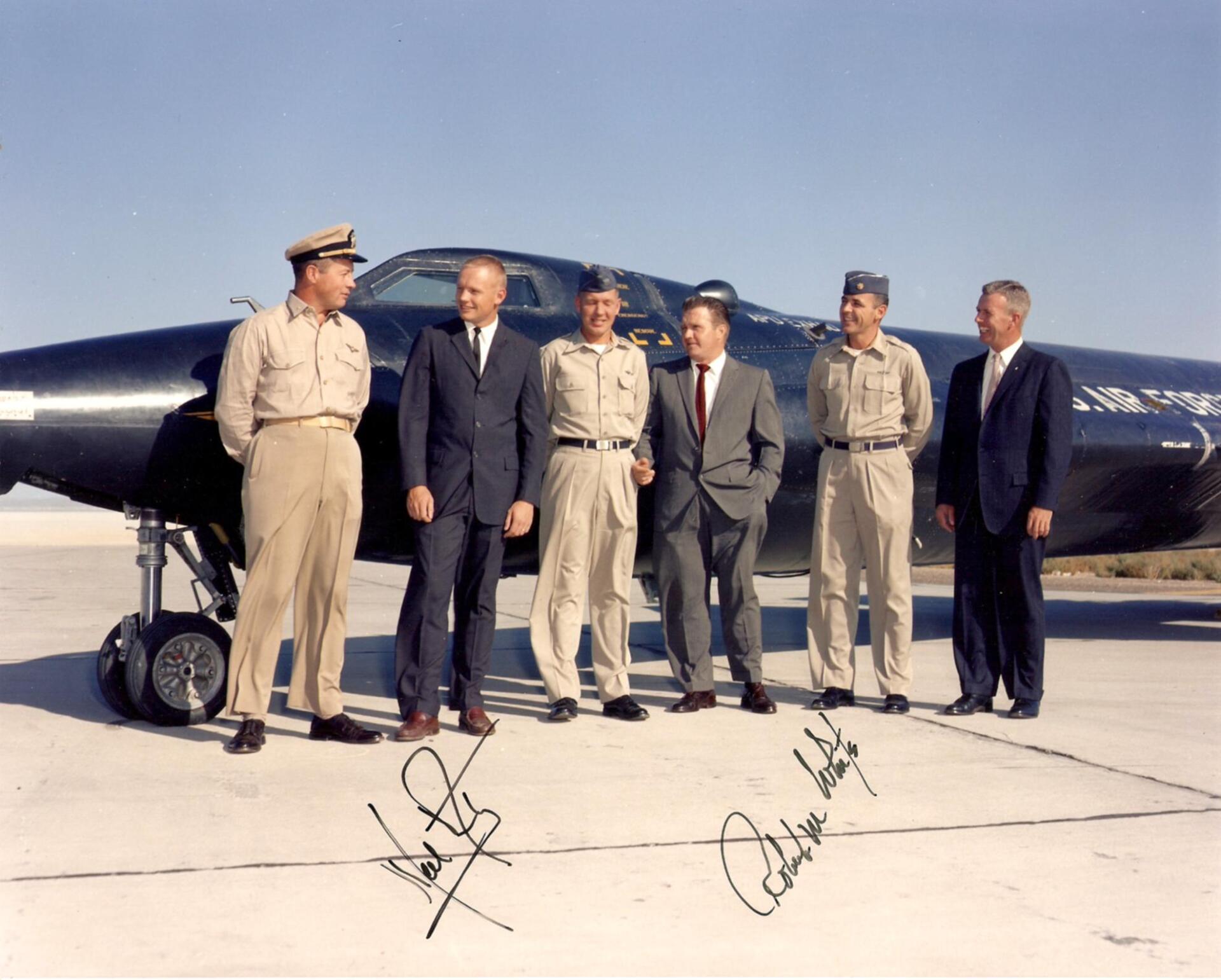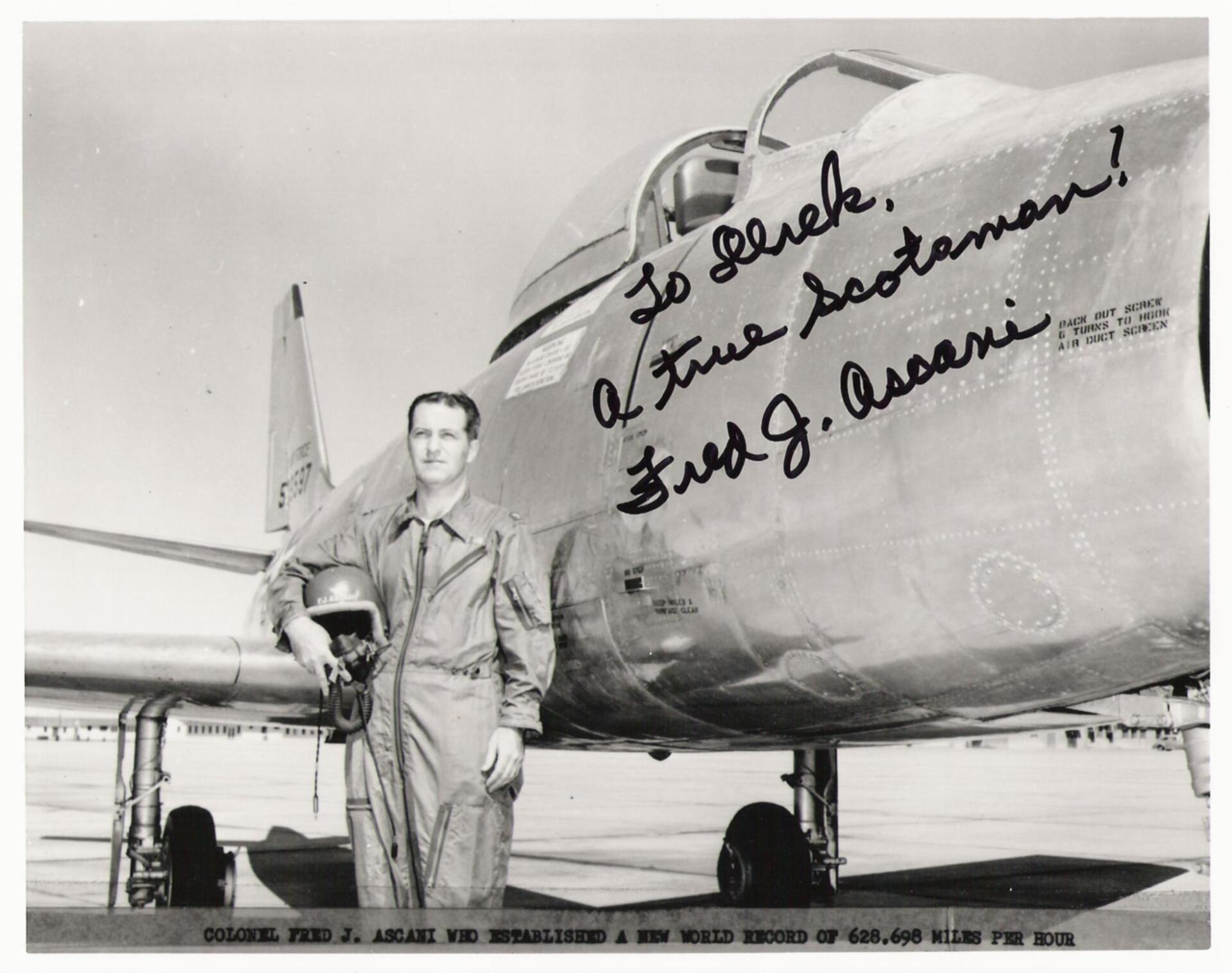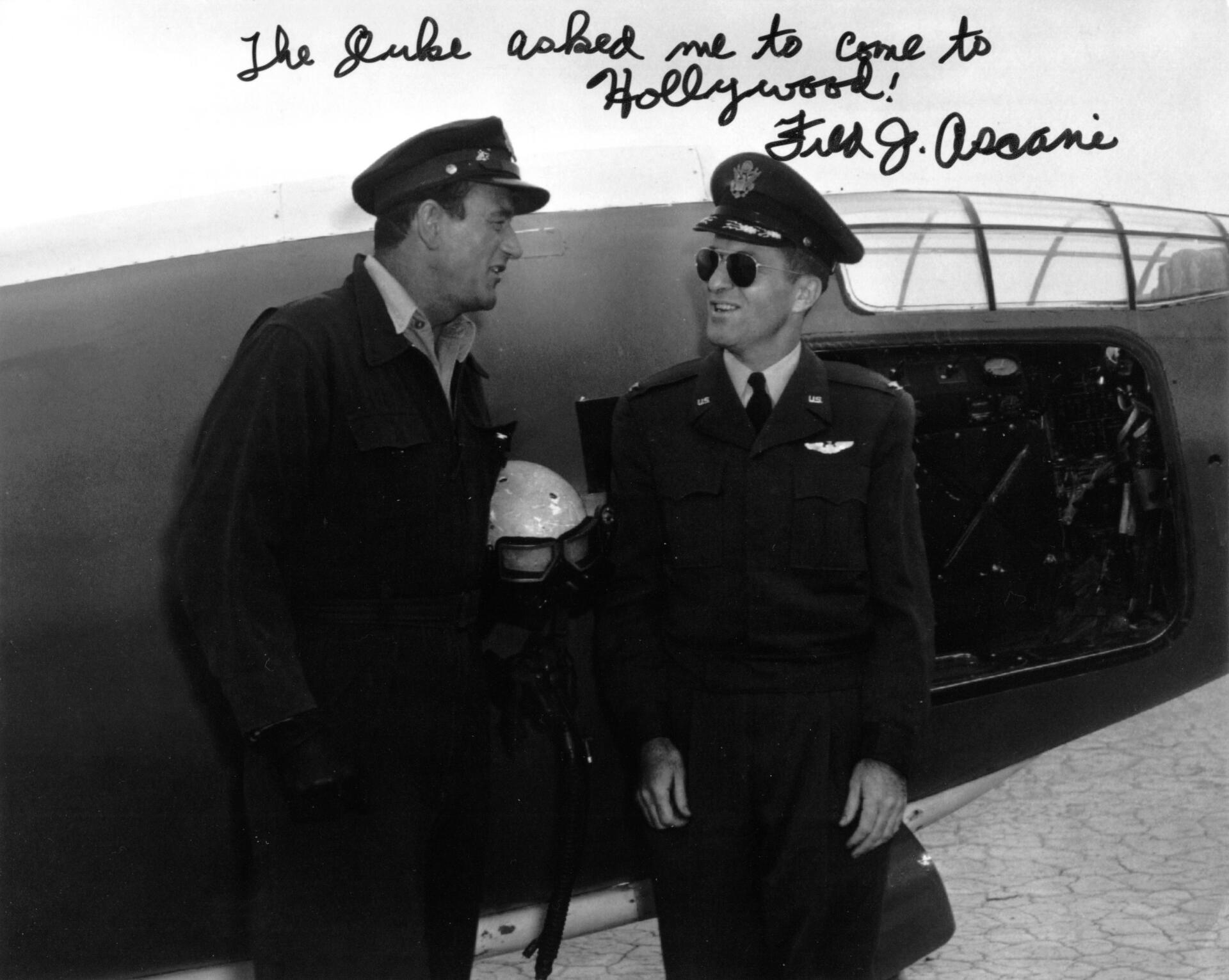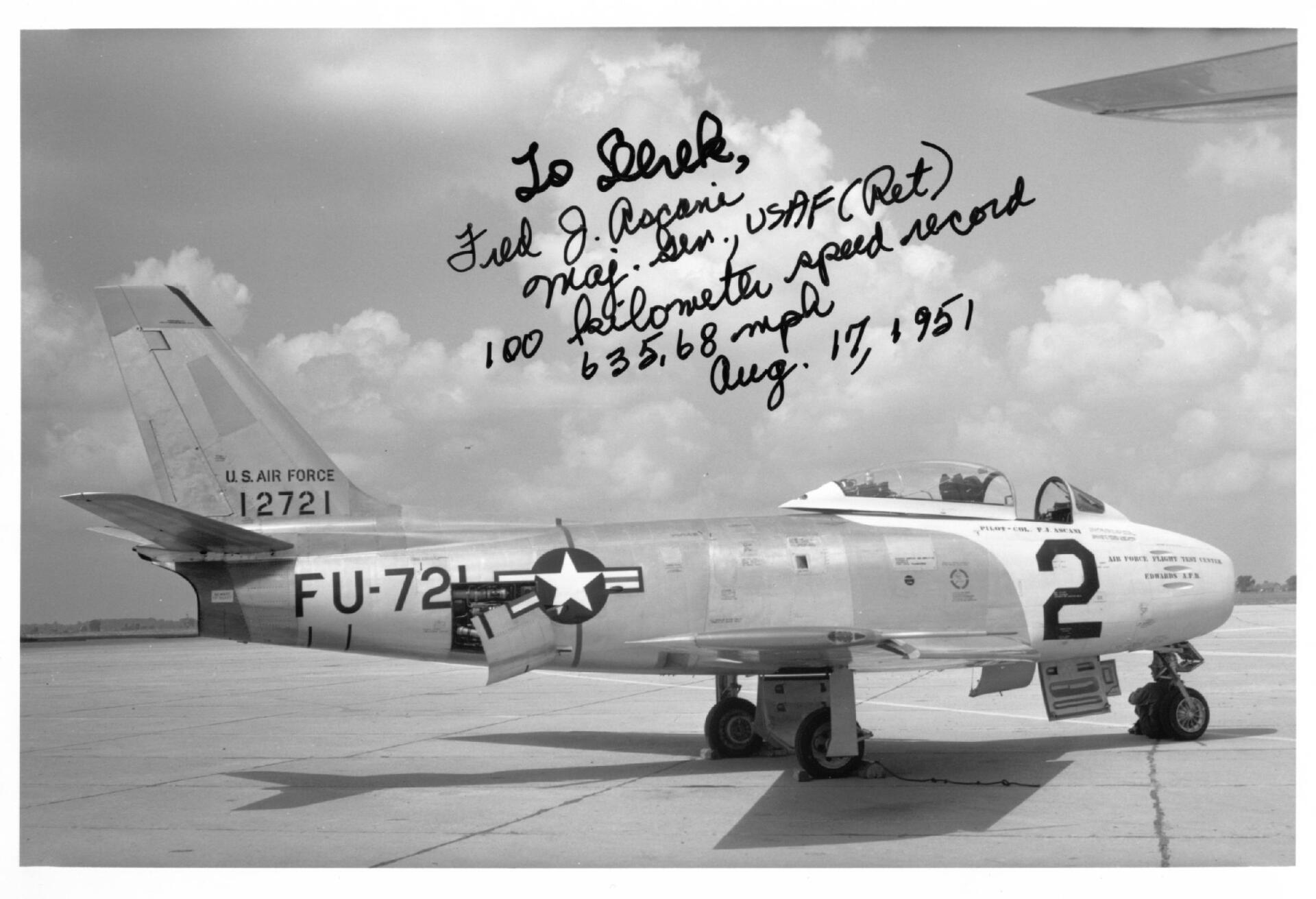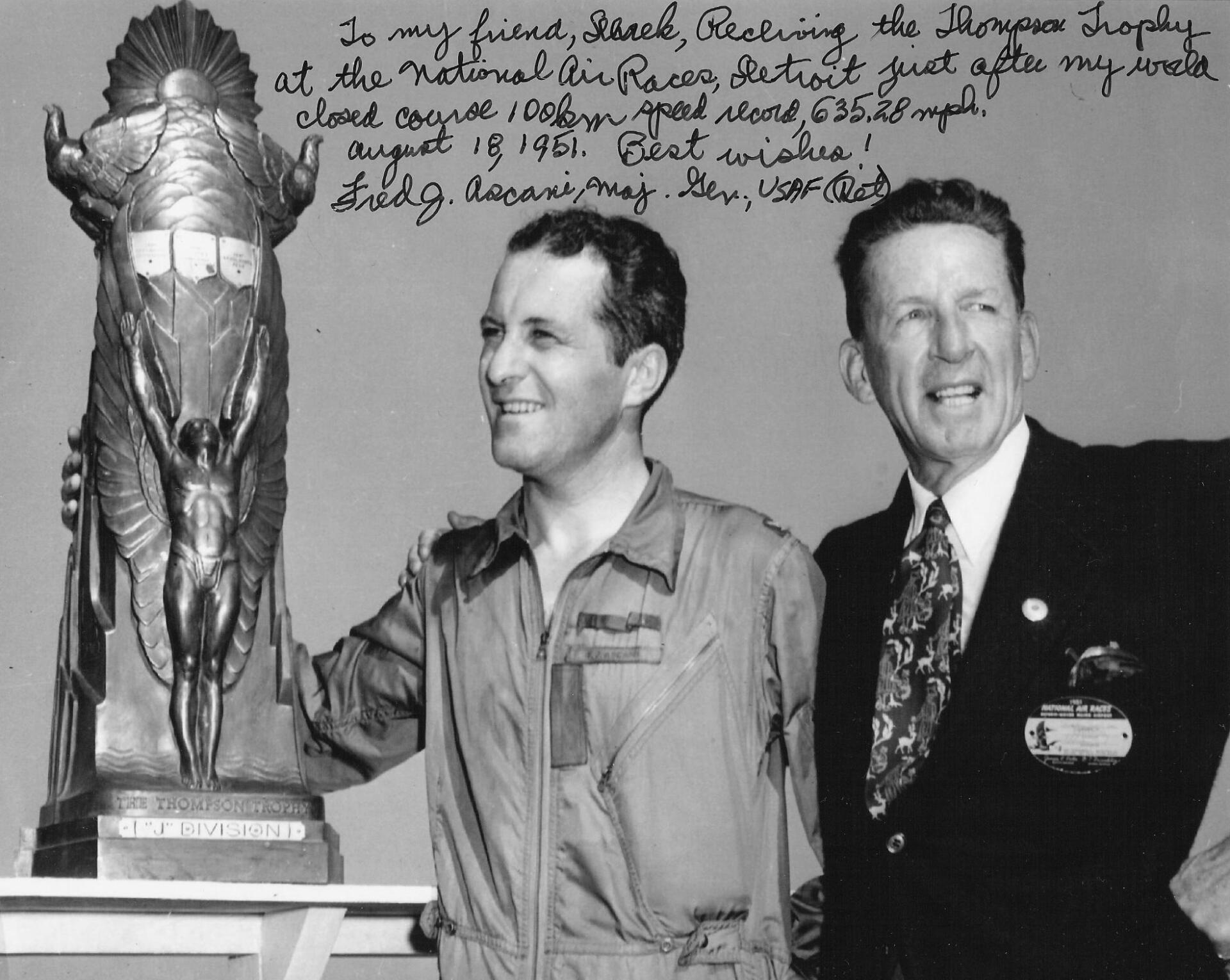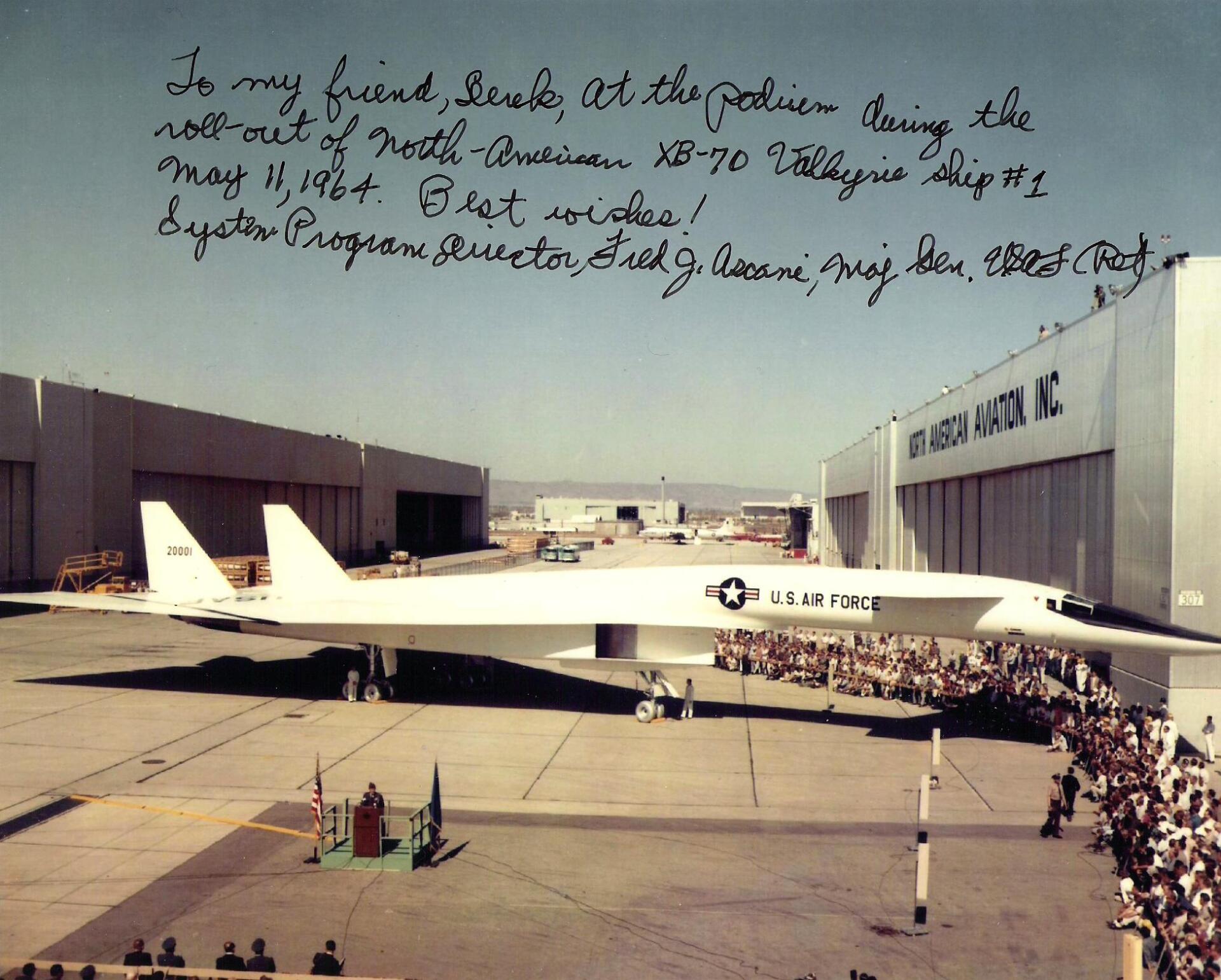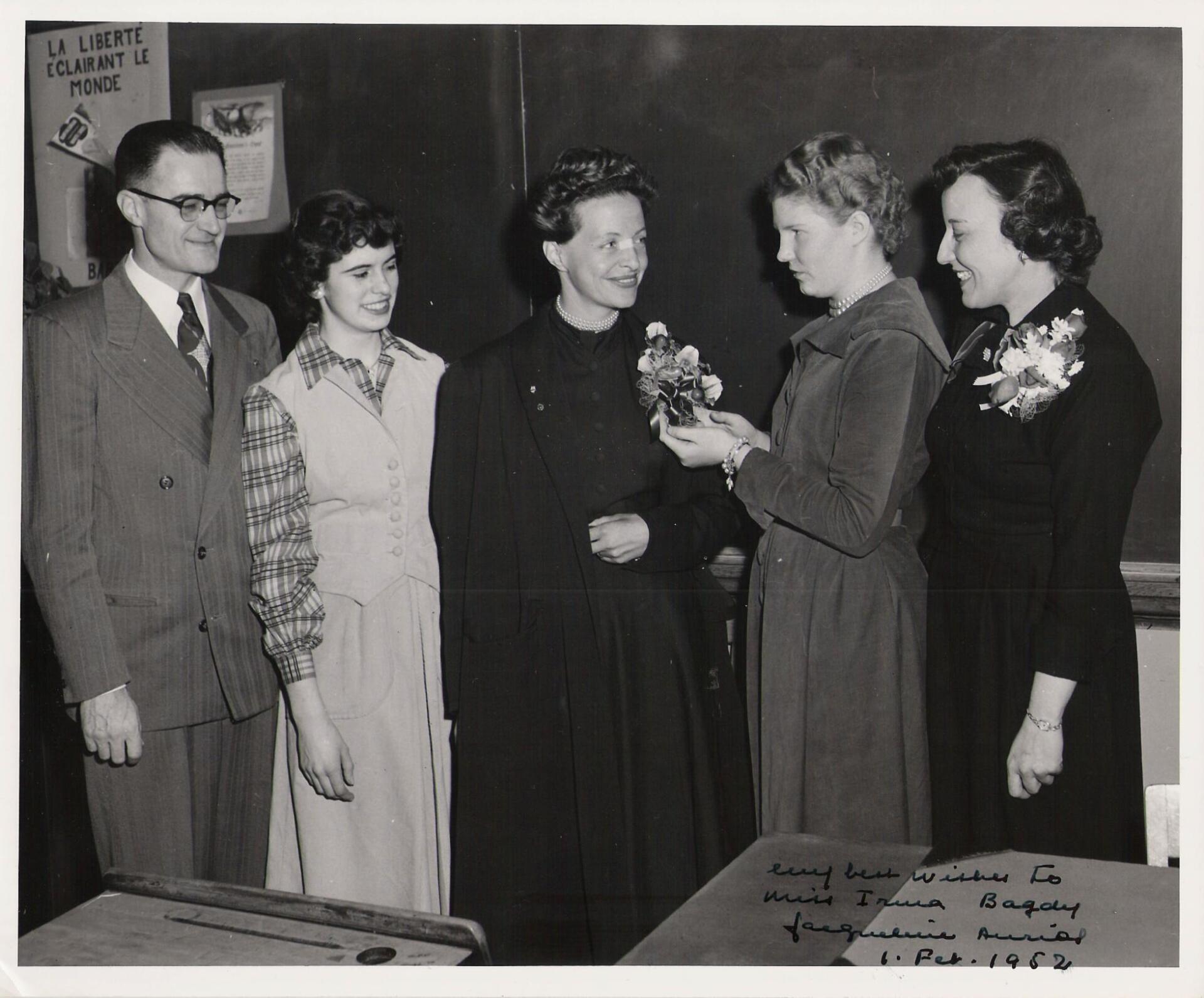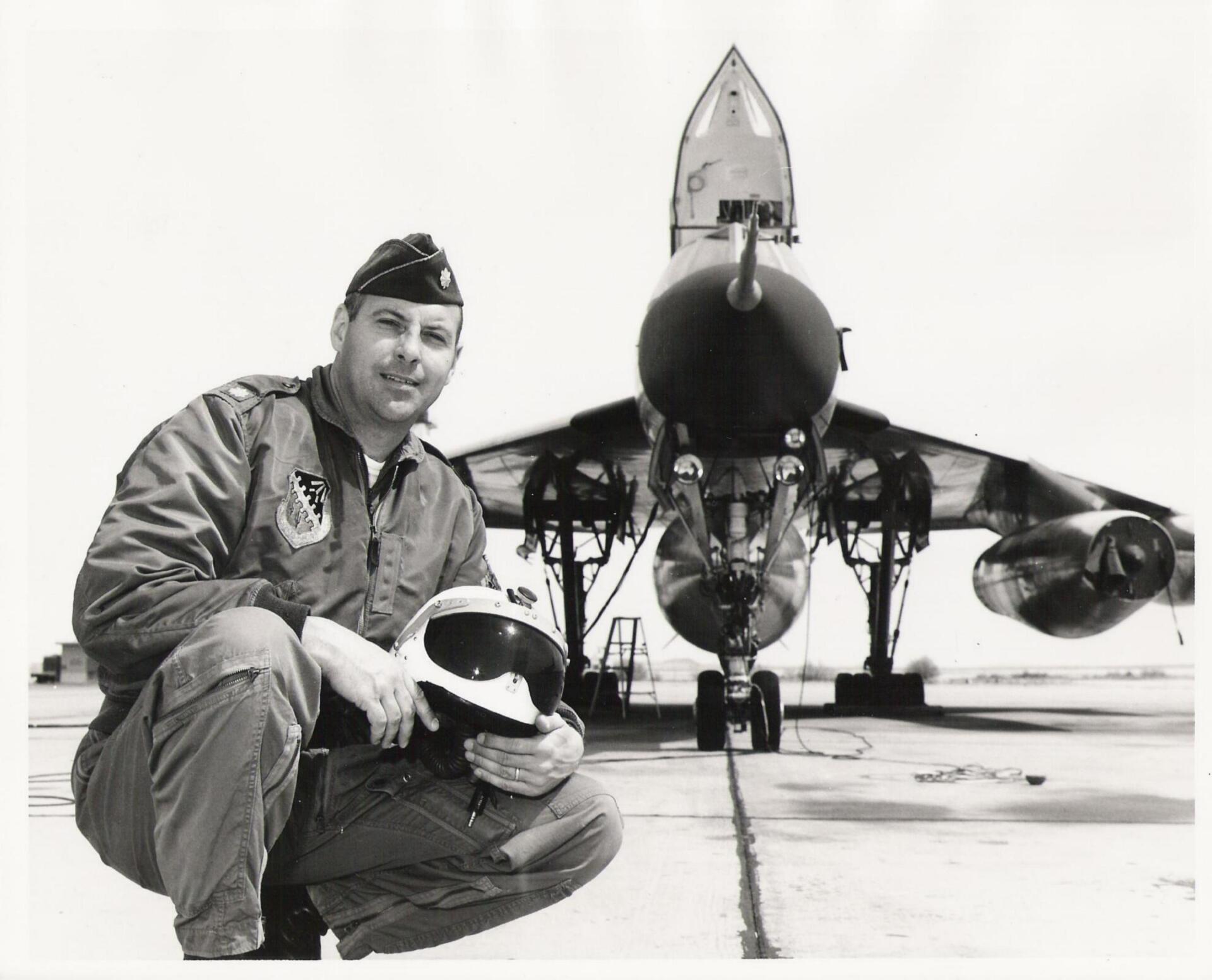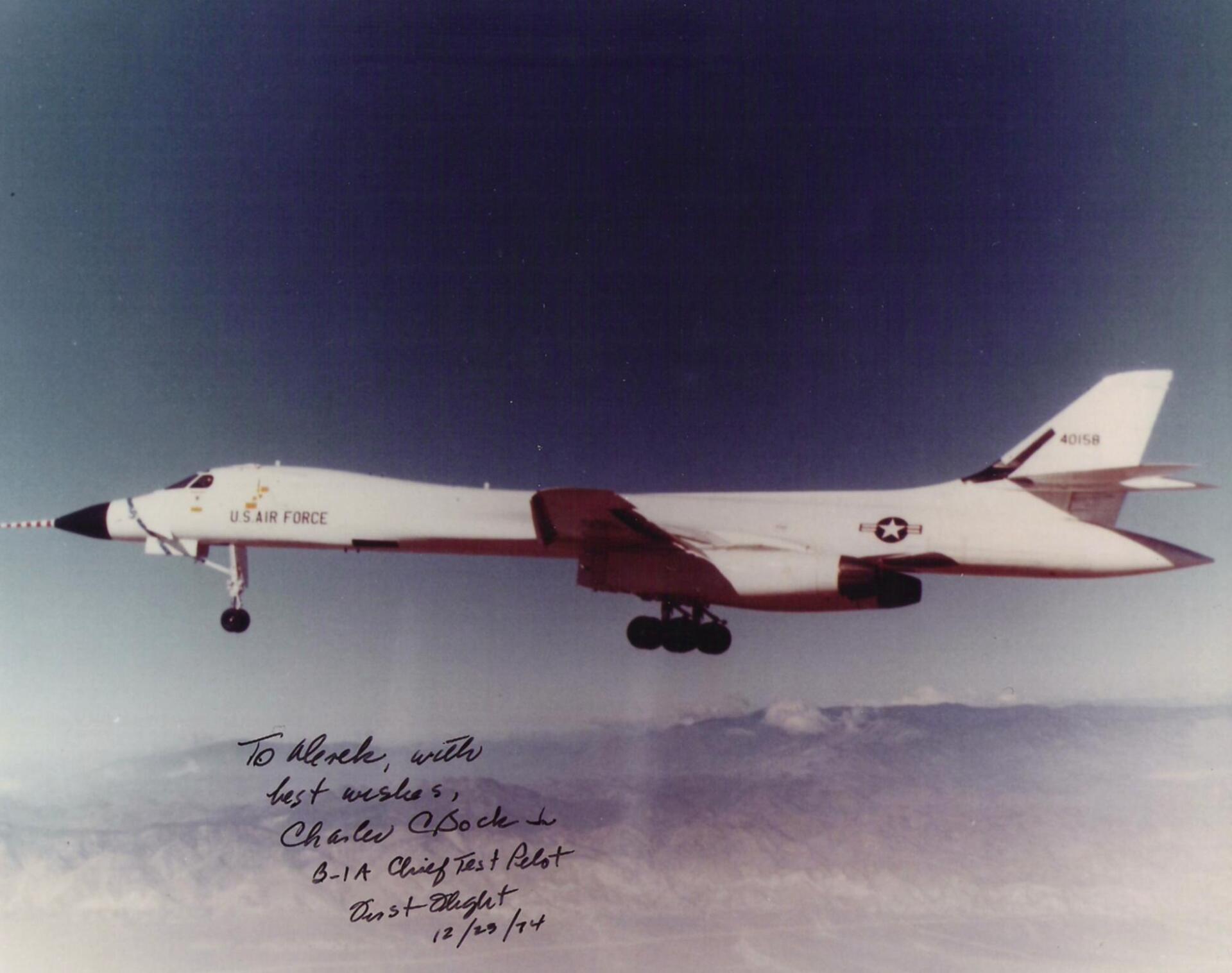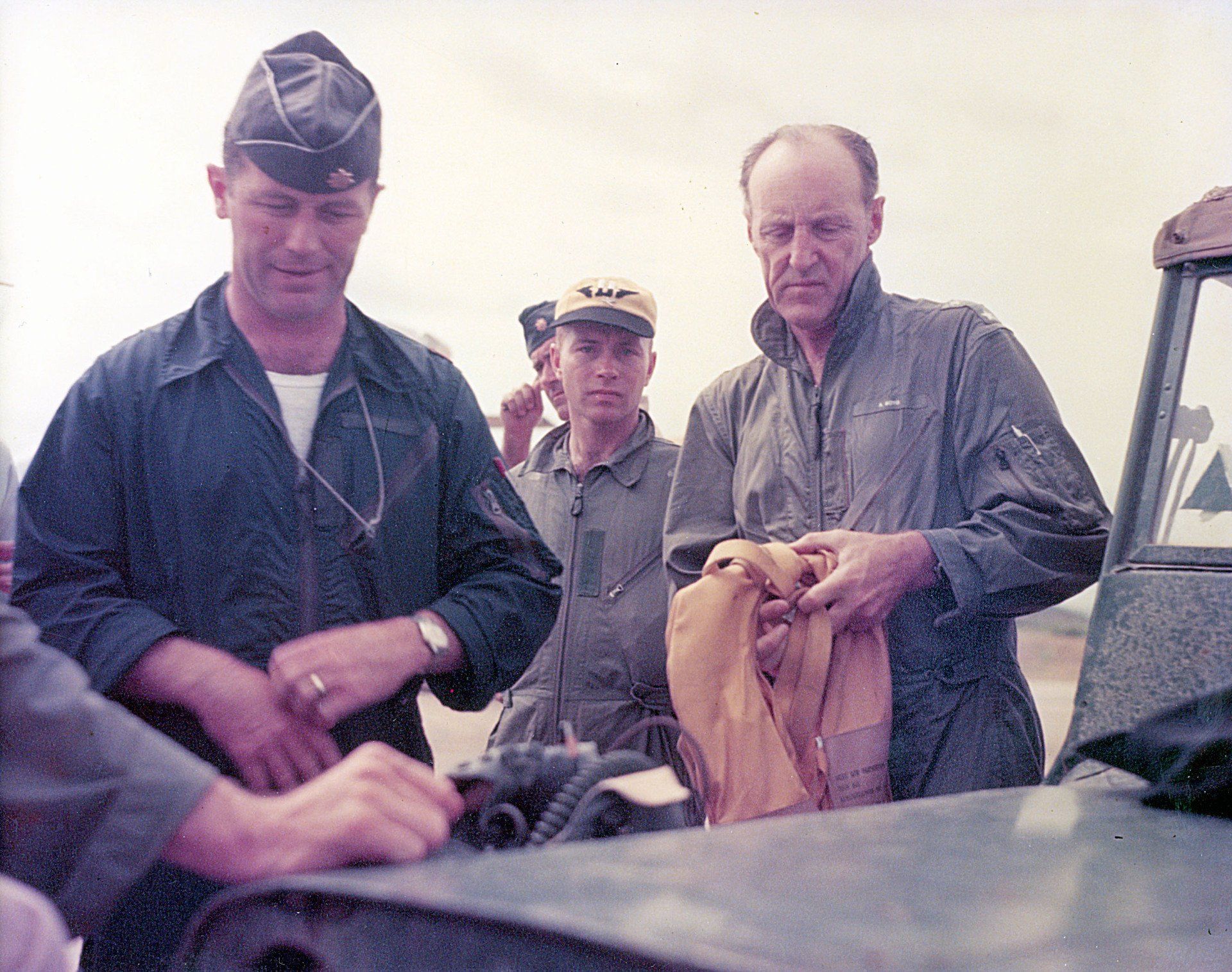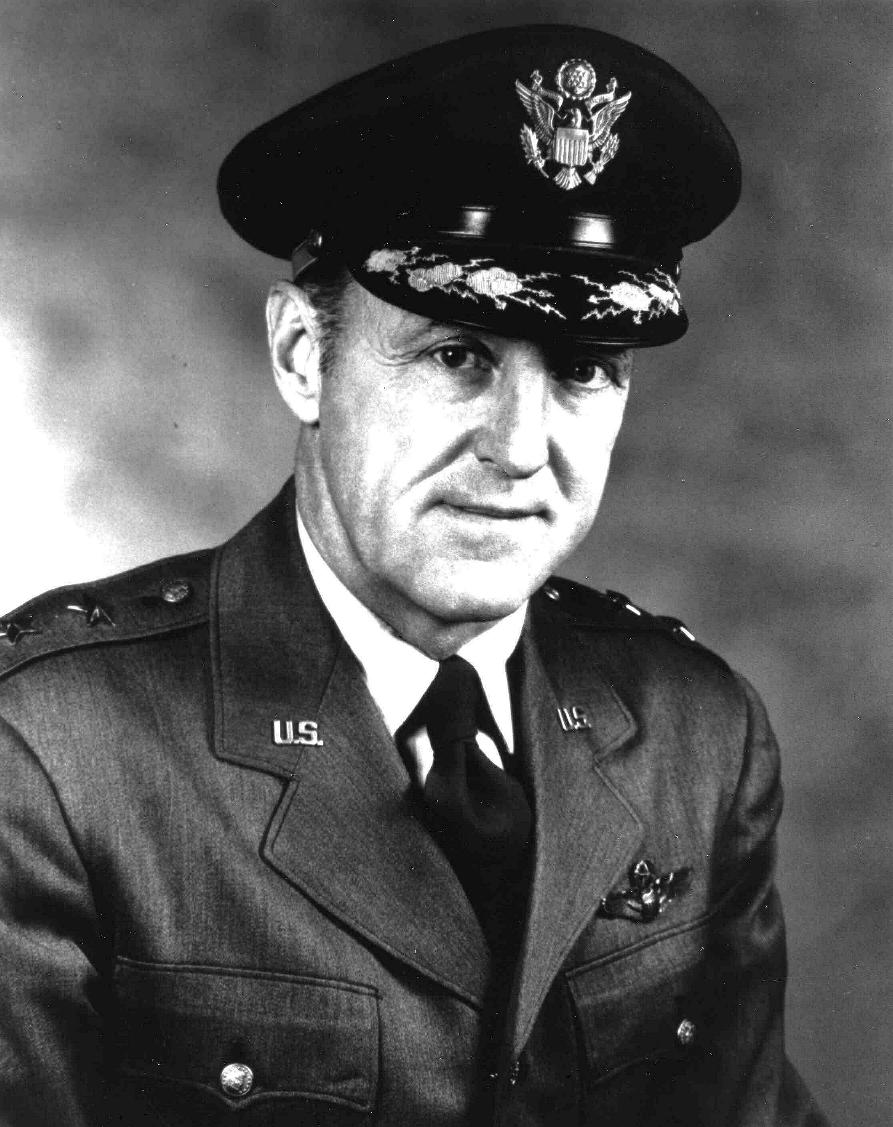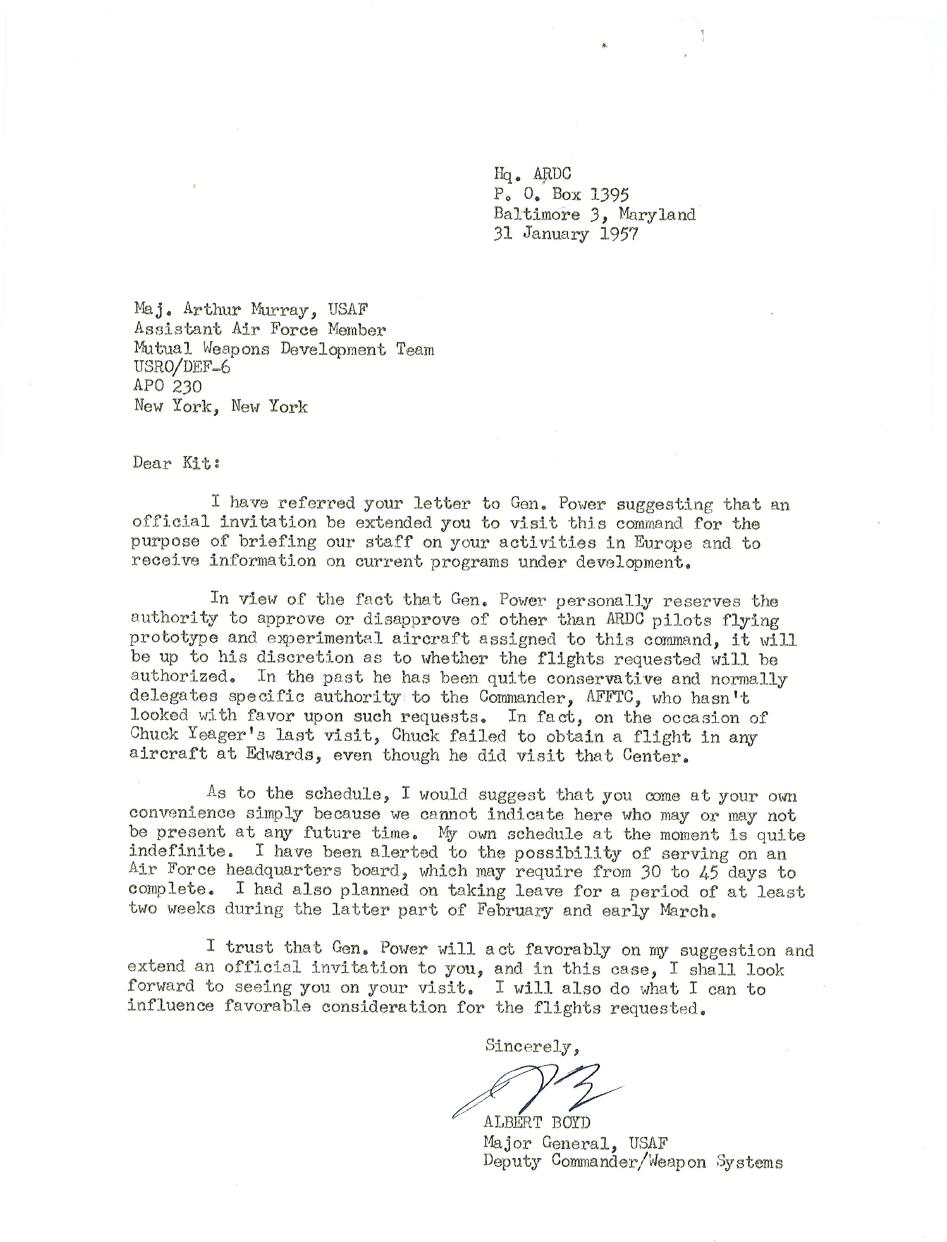Lt. Col. John E. "Jack" Allavie (USAF ret.) - 1922-2006
Lieutenant Colonel John "Jack" E. Allavie was the project pilot for "Hurry - Hurry" which was designed to determine take off procedures and problems associated with "in-line" and formation take offs at maximum weights. He was the B-52 launch pilot for the first flights of the X-15 rocket plane. The results from project "Hurry – Hurry" were crucial to national security because the U.S. government and the Air Force knew that, in the event of a nuclear attack, a response would have to be launched within ten minutes. After graduating in 1955 from the Empire Test Pilot School in Farnborough, England, he moved to Edwards Air Force Base Flight Test Operations. In 1958, he was one of only two pilots assigned to the B-52/X-15 flight test program, completing 60 flights by 1962. Later, he flew the B-58 for escape capsule system tests. These tests were conducted from 70 knots on the runway to Mach 2 at 46,000 feet. Allavie was the only military pilot on the United States Supersonic Transport (SST) source selection team in 1964, followed by a role as a member of the USAF Aerospace Plane Evaluation Team. In 1966 he retired from the Air Force and joined Flight Test Operations at Douglas Aircraft Company as an experimental test pilot, initially assigned to military test programs followed by flight testing of the DC-8, DC-9, MD-80 and DC-10/KC-10. Allavie is a Fellow in the Society of Experimental Test Pilots. He has logged 18,000 hours flying more than 120 different aircraft. Jack Allavie passed away in August 2006.
Colonel C.E. "Bud" Anderson (USAF ret.)
Colonel Anderson is a combat veteran of WWII serving two tours in the European Theatre of Operations. Flying P-51's with the 363rd Fighter Squadron, part of the legendary 357th Fighter Group; Colonel Anderson ended the war as a triple ace with 16 and 1/4 confirmed aerial victories. As a test pilot at Edwards AFB, Colonel Anderson flew the unique F-84 "parasite" fighter in tests with successful launches and retrievals to the B-36 mothership. For further information on Bud and on how to order his autobiography "To Fly and Fight", please visit his official website at toflyandfight.com .
Group Captain Harry M. Archer (RAF ret.) - 1928-2014
Harry Archer joined RAF in 1950 and once he gained his wings he flew squadron tours on Meteors and Canberra's and went on to instruct on Meteors. Archer graduated from the Empire Test Pilots School in 1957 and served at Aeroplane & Armament Experimental Establishment, Boscombe Down between1958-1960. Harry flew projects on the Avro Shackleton, Blackburn Beverley, V-bombers, Canberra PR9 (first flight), Edgar Percival EP9 (first flight), and Scottish Aviation Twin Pioneer. In 1960 Archer was selected as the first RAF exchange test pilot to serve at the Air Force Flight Test Center (AFFTC) at Edwards AFB, California. Archer participated in the T-38, T-39, C-130, and B-52/X-15 flight test programs and flew the NB-52 launch plane on 18 of the 199 successful X-15 launches. During his tour at Edwards Archer became a very close friend of fellow B-52 launch pilot Jack Allavie and indeed, it was Allavie that checked Harry out in the Convair B-58 Hustler. An interesting tale is that on his check-out flight Allavie started in the front seat of the Hustler, engaged the autopilot and he and Archer switched places (there was a bulkhead door between the front and rear cockpits). After landing the crew chief thought he'd lost his mind as he was sure Allavie was in the front seat prior to take-off!
After rotating back to the UK Archer subsequently commanded 100 Squadron RAF on Victor B2s and later, commanded RAF St Mawgan in Cornwall. Group Captain Archer retired from the RAF in 1980 after flying 7000 hours in about 170 types. Harry Archer retired to Dunfermline and I was fortunate he befriended me and got to spend time with him where he enjoyed retelling old "war stories". Having a beer with Harry while he told me about doing night time aerobatics with Jim McDivitt, launching Bob White in the X-15 and attending the Collier Trophy presentation at the Whitehouse where President Kennedy said to Harry "The last time you Brits were here in force you tried to burn my damn house down!" are memories I'll cherish forever. Harry went on to write and publish his autobiography "A Royal Air Force Pilot's Tales: My 30 year career with the RAF as a Bomber Pilot, Flying Instructor and Test Pilot - 1950-1980". I highly recommend the book; its a tremendous read. The book is available from Amazon.co.uk and from Woodfield Publishing . Harry sadly passed away in 2014.
Neil Armstrong - (1930-2012)
Neil A. Armstrong was born in Wapakoneta, Ohio, on August 5, 1930. He received a Bachelor of Science degree in Aeronautical Engineering from Purdue University in 1955. After serving as a naval aviator from 1949 to 1952 and completing his studies at Purdue, Armstrong joined the National Advisory Committee for Aeronautics (NACA) in 1955.
Before becoming an astronaut, Armstrong served as a Naval Aviator in the US Navy from 1949 to 1952 and saw action in the Korean War. After the war, he served as a test pilot at the National Advisory Committee for Aeronautics (NACA) High-Speed Flight Station, now known as the Dryden Flight Research Center, where he flew over 900 flights in a variety of aircraft. As a research pilot, Armstrong served as project pilot on the F-100 Super Sabre A and C aircraft, F-101 Voodoo, and the Lockheed F-104A Starfighter. He also flew the Bell X-1B, Bell X-5, made 7 flights in the
North American X-15, F-105 Thunderchief, F-106 Delta Dart, B-47 Stratojet, KC-135 Stratotanker and Paresev.
Armstrong transferred to astronaut status in 1962. He was assigned as command pilot for the Gemini 8 mission. Gemini 8 was launched on March 16, 1966, and Armstrong performed the first successful docking of two vehicles in space. As spacecraft commander for Apollo 11, the first manned lunar landing mission, Armstrong gained the distinction of being the first man to land a craft on the moon and first to step on its surface. Armstrong subsequently held the position of Deputy Associate Administrator for Aeronautics, NASA Headquarters, Washington, D.C. In this position, he was responsible for the coordination and management of overall NASA research and technology work related to aeronautics. He was Professor of Aerospace Engineering at the University of Cincinnati between 1971-1979. During the years 1982-1992, Armstrong was chairman of Computing Technologies for Aviation, Inc., Charlottesville, Va. He received a Bachelor of Science Degree in Aeronautical Engineering from Purdue University and a Master of Science in Aerospace Engineering from the University of Southern California. He holds honorary doctorates from a number of universities.
Armstrong is a Fellow of the Society of Experimental Test Pilots and the Royal Aeronautical Society; Honorary Fellow of the American Institute of Aeronautics and Astronautics, and the International Astronautics Federation. He is a member of the National Academy of Engineering and the Academy of the Kingdom of Morocco. He served as a member of the National Commission on Space (1985-1986), as Vice-Chairman of the Presidential Commission on the Space Shuttle Challenger Accident (1986), and as Chairman of the Presidential Advisory Committee for the Peace Corps (1971-1973). Armstrong has been decorated by 17 countries. He is the recipient of many special honors, including the Presidential Medal of Freedom; the Congressional Space Medal of Honor; the Explorers Club Medal; the Robert H. Goddard Memorial Trophy; the NASA Distinguished Service Medal; the Harmon International Aviation Trophy; the Royal Geographic Society's Gold Medal; the Federation Aeronautique Internationale's Gold Space Medal; the American Astronautical Society Flight Achievement Award; the Robert J. Collier Trophy; the AIAA Astronautics Award; the Octave Chanute Award; and the John J. Montgomery Award.
Click here to read Mr. Armstrong's NASA Dryden Flight Research Center biography (The Center was renamed NASA Armstrong Flight Research Center in Neil's honor in 2014.
Major General Fred J. Ascani - (1917-2010)
General Ascani is a combat veteran of WWII where he flew B-17's for the 815th and 816th Bombardment Squadron's (part of the 483rd Bombardment Group). A test pilot at Wright-Patterson AFB and Muroc (later Edwards AFB), Ascani was one of the men who selected then Captain Chuck Yeager to fly the Bell X-1 program. As a test pilot, Ascani flew such experimental types as the X-1, X-4, X-5, XF-92A, XB-42, XB-45 tornado, XB-46, XB-48, YB-49 Flying Wing and XB-51. Read the full biography of General Ascani , complete with many photographs.
Madame Jacqueline Auriol (1917-2000)
Jacqueline Auriol is France's most distinguished aviatrix. Born 5 November 1917 in Challans, France, she is the daughter of a wealthy shipbuilder and timber importer. After graduating from the university in Nantes, she studied art at the Ecole du Louvre in Paris. In 1938, she married Paul Auriol, son of Vincent Auriol, a prominent leader in the Socialist party. During World War II, Madame Auriol, by that time the mother of two sons, evaded Gestapo agents and assisted the French Resistance. After the war ended, Vincent Auriol became President of France, and Paul Auriol served as his father's press secretary. Madame Auriol soon became immersed in the social activities of the Palais Elysee. She took up flying in 1947, earned her tourist license the following year, and started stunt flying.
In July 1949, Madame Auriol was severely injured when a seaplane, in which she was a passenger, crashed into the Seine. Over the next two years, she underwent 22 operations to rebuild her face. But she did not give up flying. Between her last two operations in the United States, she earned her helicopter rating in only four weeks at the Bell Aircraft factory in New York. In 1950, Madame Auriol gained her military license and qualified at the Flight Test Centre at Bretigny, France, as the world's first woman test pilot.
On 11 May 1951, she set a new women's speed record in a British Vampire jet, flying 508.8 mph and besting Jacqueline Cochran's previous record, set in a P-51. This began a friendly rivalry between the two ladies, and they traded the women's world speed record for over a decade. Madame Auriol went on to beat her own record on 21 December 1952 in the Mistral. Flying a Mystere IV on 3 August 1953, she became the second woman to break the sound barrier. She then reclaimed the speed title from Miss Cochran on 31 May 1955, this time in the Mystere IVN. The title of "fastest woman" returned to Madame Auriol two more times: on 22 June 1962 in the Mirage IIIC and on 14 June 1963 in the Mirage IIIR. Later, she was one of the first pilots to fly the supersonic Concorde. Madame Auriol was awarded the 1952,1953, and 1955 Harmon International Trophies, the Paul Tissander Diploma in 1953, the 1963 Gold Air Medal, La Grande Medaille de L'Aero Club de France in 1963, and the Legion d'Honneur for her record-setting achievements. After leaving the Flight Test Centre, Madame Auriol worked with the Ministere de la Cooperation, using remote sensing techniques to gather information for agricultural development. The United Nations Food and Agriculture Organization presented her with the Ceres Medal for her significant contributions.
Colonel Charles C. "Charlie" Bock (USAF ret.) - 1925-2019
A veteran of Korea with the 3rd Bomb Wing and Vietnam with the 35th Tactical Fighter Wing, Charlie Bock flew 103 combat missions. During his military career he was trained as a test pilot and later as a military astronaut-designee. He was twice assigned to Flight Test Operations at Edwards AFB. He joined the YF-12/SR-71 Test Force in 1965. As Operations Officer on the Blackbird Test Program, he piloted stability, control and performance flights, which surpassed Mach 3 and 80,000 feet. He successfully participated in the extension of the operational envelope of the SR-71. Bock retired from the Air Force in 1973 to take a position with Rockwell International Corp. as chief test pilot for the B-1 bomber program. In December 1974, he piloted the first flight of the bomber. He was responsible for all aircrew training and had a major influence in the formulation of the B-1 flight test program priorities and objectives. He retired from Rockwell in 1981, and from 1984 to 1987 was a consultant to Northrop Crop. on the B-2 Stealth bomber. During his flying career, Bock logged over 10,000 hours in more than 70 types of aircraft. Born in Iowa in 1925, he received a B.S. in Aeronautical Engineering from Purdue University in 1949. Bock was also a graduate of the USAF Test Pilot School, the USAF Aerospace Research Pilot School, the Air Command and Staff College, and the Industrial College of the Armed Forces. A fellow of the Society of Experimental Test Pilots, he received the Society’s Ray E. Tenhoff Award and the Iven C. Kincheloe Award. Bock has also been honored by the Legion of Merit, two Distinguished Flying Crosses, six air Medals and the Aerospace Walk of Honor (1994).
Major General Albert Boyd (1906 - 1976)
Albert Boyd logged more than 23,000 hours flight time in 723 military aircraft. At the time of his retirement in 1957, he had flown every aircraft in the USAF inventory, including attack, cargo, trainer, fighter, experimental, bomber, mission trainer, liaison, observation, and general aviation planes and helicopters. It is believed his flying experience is unequalled in the world. Boyd's 30-year military career spanned a period of the greatest advances in airplane design and performance. He developed and practiced a new philosophy of flight testing which greatly contributed to aviation progress during the first supersonic decade. From 1947-1957, the USAF did not buy a single type of airplane that he had not personally approved and flown.
The prototype Lockheed P-80 Shooting Star, modified as a racer and designated P-80R, was piloted by Colonel Boyd to 623.73 mph (1,004.2 km/h) on 19 June 1947. Boyd led the newly formed Air Force's X-1 supersonic flight program and made the selection of Chuck Yeager to pilot the plane. Yeager described Boyd as a strict disciplinarian who would enforce (often with a very loud voice) USAF uniform regulations. He remarked that "You might be his star pilot, but Lord help you if you came before him in his office with an un-shined belt buckle". Boyd was highly respected by his subordinates.
When he retired, he was known as the "Father of Modern Flight Testing," "World's Number One Test Pilot," "Dean of American Test Pilots" and "Father of USAF Test Pilots." His assignments included: Chief of Flight Section at Wright Patterson AFB; Commander, Experimental Test Pilot School; first Commander, USAF Flight Test Center at Edwards AFB; Commander, Wright Air Development Center; and Deputy Commander, Weapons System Headquarters, Air Research and Development Command. He received many honors: Chanute Award, Legion of merit, Distinguished Flying Cross, Distinguished Service Medal, Air Power Trophy, Schilling Award, Medaille de l'Aeronautique, Brevet Militarire de Pilote d'Avion and the Aerospace Walk of Honor (1990). Boyd died on September 18, 1976.

